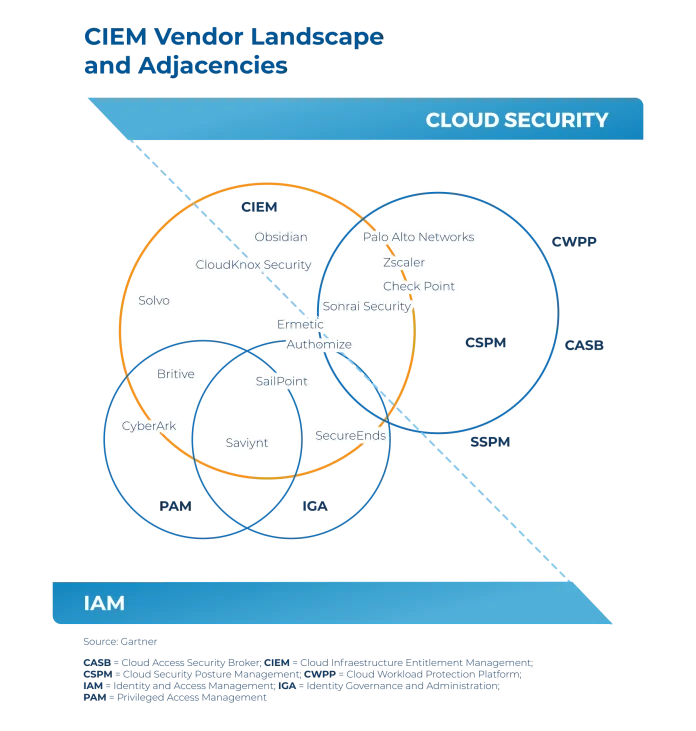In a digital world where data is considered the most valuable asset for any business, it’s highly essential to keep it secure. Among all Amazon Web Services (AWS), the security pillar mainly depends on AWS IAM, which is the major guard that businesses can utilize to safely control their resources. This article takes you through an exploration of AWS Identity Management and its features, including some best practices to take into account when using cloud services from Amazon Web Services environment, which are closely related to security measures.
The second section on the AGs managed AWS cloud infrastructure series consists of bringing the veil down on AWS identity management, or as it is technically and formally known as the IAM (Identity Access Management). Identity Management is a comprehensive offering of service from Amazon Web Services which allows organizations to manage and regulate user identities and resource access permissions within AWS. By having the IAM one can develop and control groups, roles, users as well as policies defining who would have access to which resources on what rights level. When IAM strictly follows the principle of least privilege, it in its nature eliminates security breaches and ensures that the system remains compliant with regulatory standards.
Perplexity. First let me tell you the core components of AWS IAM. Sentence Burstiness, The AI generated sentences tend to be too uniform. Humans write with more burstiness mixing sentence lengths; long ones with shorter ones. Try varying your sentence structure as well as length, use conversational language but keep it professional, create unclear phrases and do not overuse words. Use adverbs, prepositions, and vague qualifiers where they are needed. Do not add new information to the given input text. Keep your writing formal/professional. It is also important that the tone remains formal.
Now I’m going to show you how this works with an example that was made by AI and needs revision based on our set of rules.
Answer: This time around I’ll be introducing two critical elements in AWS IAM. In order to have a thorough grasp of AWS IAM, it is imperative that you get to know its primary elements.
The people who use AWS services through access channels called IAM users are representatives of the members of an organization with a need to access these resources. Each user has an assigned unique set of security credentials, such as a username and password, along with permissions specified to their role. IAM groups, on the other hand, are entities comprising users with similar access needs. By not applying the authority to a single individual, groups in their design help streamline the access management processes. Roles: Identity and Access Management (IAM) roles are special temporary credentials that authorize access to entities – whether applications or AWS services. These roles are generally used to support secure communications among AWS services and resources. An IAM policy is a JSON document that determines the permissions that a user, group, or role has to the defined AWS resources and actions that are allowed. This method provides an explicit set of resources and acts through which control of access is possible. The functionality and features of AWS IAM are how the service controls and manages access to the resources available in a user’s account. From a security perspective, AWS IAM has a range of features for different levels in the organization that help to fulfill security requirements.
Access control: Fine-grained IAM allows an organization to establish exact rights, that is who can do what actions on which specific AWS resources. The level of control implemented will result in reduced risks of unauthorized access and data loss. Multi-Factor Authentication (MFA) – IAM MFA supports users in providing an additional authentication factor, for example, a one-time password with their credentials. The use of MFA increases the security level by adding an extra layer of protection against unauthorized access. For IAM identity federation is the process of establishing an identity linkage with external identity providers, that could be Active Directory or SAML-based providers. This method consolidates identity management and makes it possible to use a single sign-on (SSO) for users. With IAM, access keys management is made easy for organizations to programmatic access AWS services securely. Access keys are rotated on a regular basis, and this eliminates the danger of unauthorized entry and credibility disclosure. Audit logging and Monitoring: IAM generates detailed audit logs capturing all user actions within AWS accounts. For organizations, AWS CloudTrail can be utilized for monitoring IAM events, policy changes tracking, and security incidents detection. Best practices in AWS IAM include the following: To increase security through AWS IAM, the use of best practices is important for companies.
Use an approach that can be referred to as least privilege, whereby users and entities are assigned permissions only insofar as they are necessary for their tasks, thus decreasing the possibility of unauthorized entry. And when allowing applications to act on their behalf, use IAM roles to dynamically define what resources can be accessed, thereby minimizing any potential exposure of confidential credentials. Prevent misuse of the account: In the case of IAM user with admin privileges, mandatorily require MFA for them to increase security. Establish consistency through policy reviews: Verify that IAM policies are correct by reviewing them regularly against requirements and compliance. Also, one can track user’s activity with AWS CloudTrail and therefore monitor IAM events which facilitate an early detection and response to any security breaches.
Organizations wanting to enhance security while working in the cloud should consider AWS Identity and Access Management as an essential piece. By using IAM capabilities, businesses can successfully limit access to their resources and thus reduce the level of possible security hazards while still being compliant with any regulatory standards that are prevalent throughout their industry. With IAM positioned as a foundation of security for the cloud, organizations have confidence in beginning their digital transformation path because they know all data and resources are safe within AWS.

